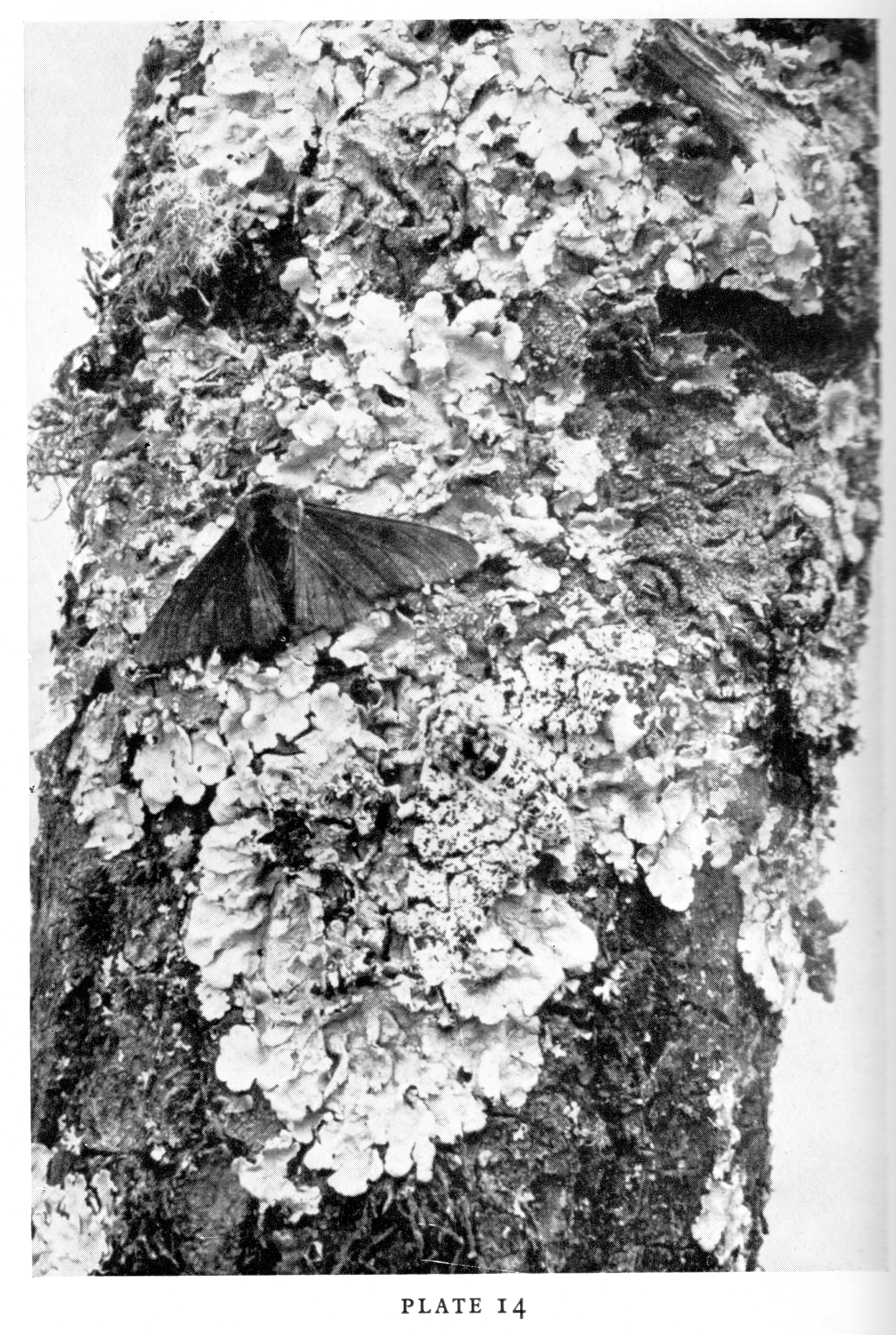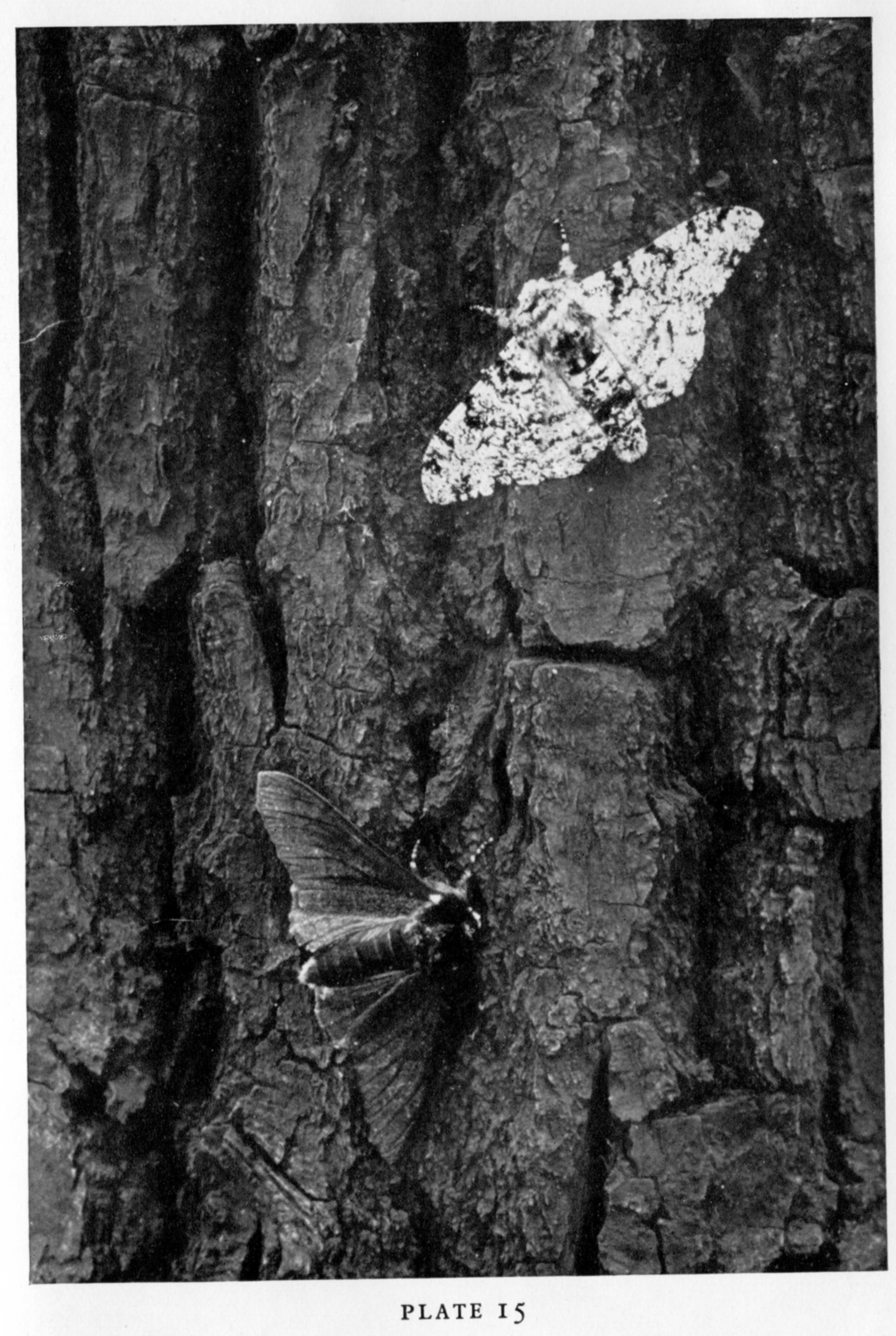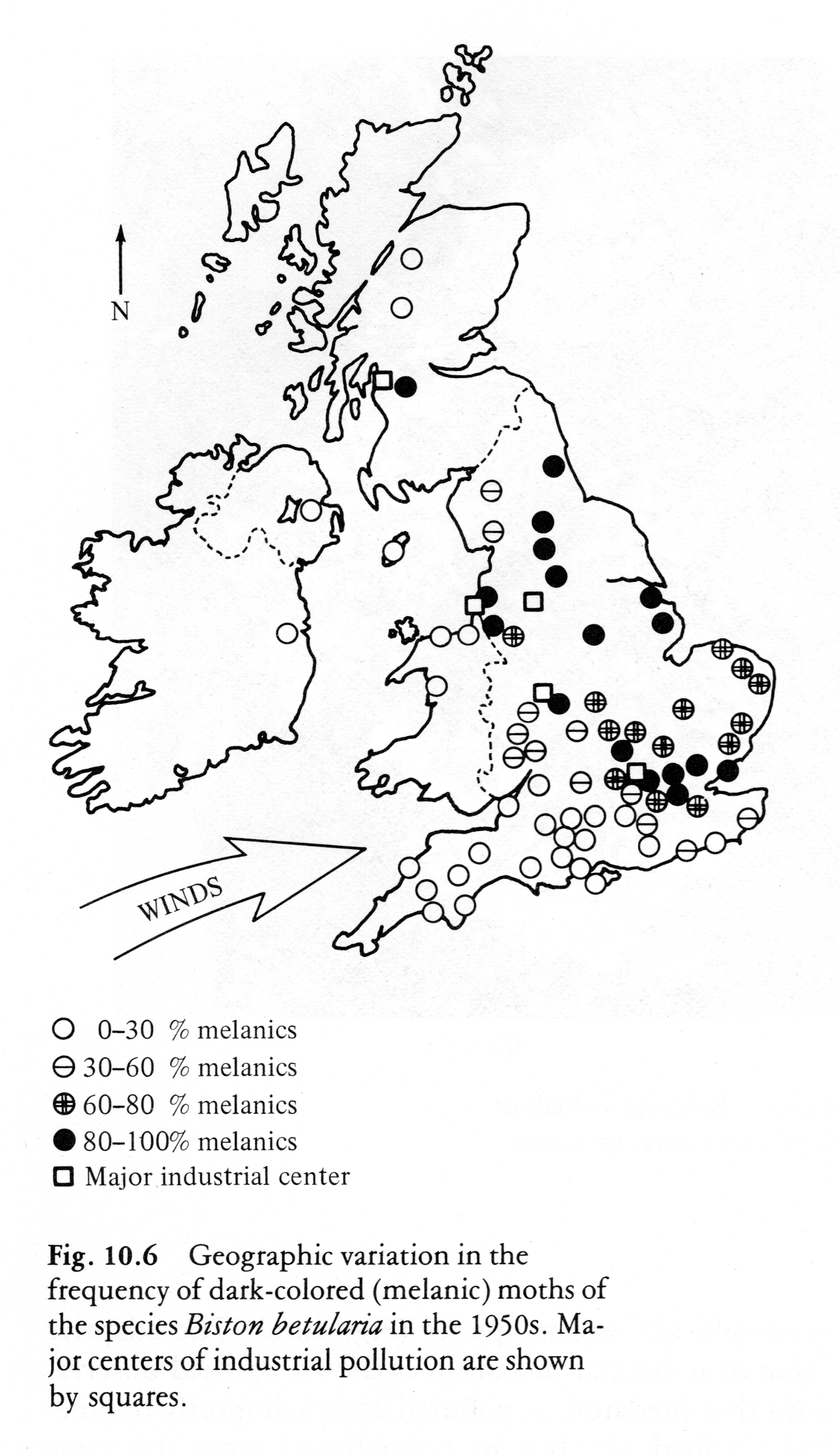Industrial Melanism (Natural Selection in action):
|
Natural selection by bird predators favors the survival of moths and other insects that are camouiglaged against
their backgrounds. When pollution by soot coated the tree trunks downwind from the industrial factories
of England, natural selection favored black (melanic) moths in polluted habitats. However, in habitats where there
were no factories and where the trees maintained their original cover of light-colored lichens, the original light colors were favored.
Reduction of pollution has changed the situation back again, so that the dark (melanic) moths are now rare everywhere.
|
 Light and dark (melanic) moths on a lichen-covered tree trunk. Experiments with birds show that they eat more of the melanic moths, which are easier for them to see in this habitat. |  Light and dark (melanic) moths on a soot-covered tree trunk. Experiments with birds show that they eat mostly the light-colored moths, which are easier for them to see in this habitat. |

Geographic variation in the frequency of melanic moths.
—— Rev. Aug. 2022 ——